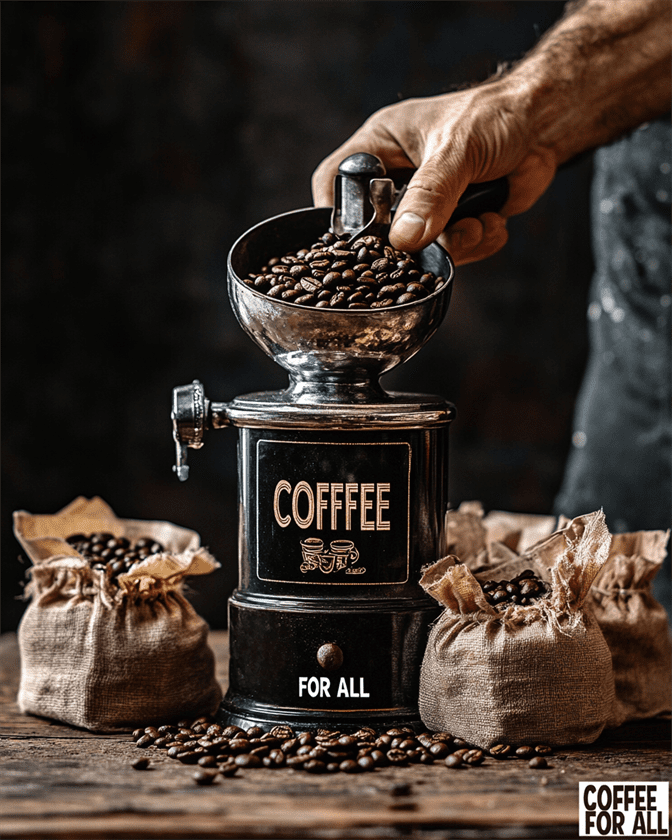The best Drip Coffee: Brewing Method and Popularity
Table of Contents
A Deep Dive into the Brew That Started it All
Drip coffee is one of the most popular methods of brewing coffee, beloved by coffee enthusiasts worldwide for its simplicity, consistency, and rich flavor. For those who appreciate a daily ritual, the drip coffee machine is often the go-to choice. It’s an iconic process that’s easy to use yet capable of delivering a cup of coffee that can be both comforting and exhilarating.
But what exactly is drip coffee, and why has it stood the test of time as one of the most preferred brewing methods? Let’s explore the art and science behind this age-old brewing technique.
The Basics
Drip coffee, also known as filter coffee, is made by dripping hot water through finely ground coffee beans. This process allows the water to slowly extract the coffee’s oils and flavors, resulting in a smooth, flavorful cup. The coffee grounds are placed in a filter, which is usually made of paper or metal, and the hot water is poured over them in a controlled manner. Gravity then pulls the water through the grounds, and the brewed coffee drips into a pot or carafe below.
This brewing method is popular because it’s straightforward and produces a balanced cup of coffee without much hassle. While drip coffee machines can vary in complexity, the fundamental process remains the same: water extracts the coffee’s flavors and oils as it flows through the grounds, creating a liquid that is rich in taste but free from grounds and sediment.
The Drip Coffee Brewing Process
The drip coffee process starts with the coffee beans, which are usually ground to a medium coarseness to ensure optimal extraction. The size and grind of the coffee can significantly influence the flavor of the brew, which is why finding the perfect grind is essential for the ideal cup.
Once the grounds are prepared, the water is heated to the optimal temperature—usually between 195°F and 205°F (90°C to 96°C)—to extract the coffee’s flavors fully. If the water is too cold, it won’t extract enough flavor from the grounds, resulting in a weak or underwhelming brew. If the water is too hot, it can lead to over-extraction, which may make the coffee taste bitter or unpleasant.
In a drip coffee maker, the water is usually poured into a reservoir, and the machine heats it before slowly dripping it onto the coffee grounds. As the water interacts with the coffee, it absorbs oils, flavors, and essential compounds that contribute to the final taste. After passing through the grounds, the brewed coffee drips into a carafe or pot, ready to be enjoyed.
Why is Drip Coffee So Popular?
There are several reasons why drip coffee remains one of the most popular methods of brewing coffee worldwide. First and foremost, it’s incredibly easy to use. Drip coffee makers are designed for convenience and consistency, making it simple to brew a perfect cup of coffee without needing advanced barista skills or knowledge of intricate brewing techniques.
Another factor in its popularity is the availability of drip coffee machines. Whether you’re at home, in the office, or at a local café, drip coffee machines are ubiquitous. They come in a wide range of sizes and styles to fit any need—from small, personal machines to larger, commercial-grade brewers.
Moreover, drip coffee’s flavor profile is appealing to a wide audience. The extraction process produces a smooth, well-balanced cup that is neither too bitter nor too acidic. Unlike some other brewing methods, such as espresso or French press, drip coffee doesn’t require specialized equipment or a learned technique. As a result, it’s an accessible choice for both casual coffee drinkers and more serious aficionados.
Customizing
Though the basic concept of drip coffee remains the same, there are numerous ways to customize your brew to suit your taste preferences. One of the simplest adjustments you can make is the coffee-to-water ratio. If you prefer a stronger cup of coffee, you can increase the amount of coffee grounds, while a lighter cup requires a little less.
The grind size is another factor that affects the flavor of your coffee. If your coffee tastes too weak, you may want to use a finer grind to enhance the extraction. Conversely, a coarser grind may result in a milder brew. Additionally, the type of filter you use can alter the taste. Paper filters tend to produce a cleaner, crisper cup, while metal filters allow more oils to pass through, giving the coffee a fuller, richer flavor.
The quality of the water used is also crucial. Coffee is 98% water, which means the water’s taste and mineral content can have a significant impact on the final cup. Using filtered or purified water can help eliminate unwanted flavors that might interfere with the coffee’s natural taste.
Drip Coffee vs. Other Brewing Methods
Drip coffee offers a unique balance between ease of use and flavor quality, but how does it compare to other popular brewing methods, such as French press or espresso?
- French Press: While both methods rely on the immersion of coffee grounds in water, French press coffee tends to be richer and fuller-bodied than drip coffee. The French press method allows more oils and fine particles from the coffee grounds to pass into the final cup, which gives it a thicker texture and more intense flavor. Drip coffee, on the other hand, is cleaner and more balanced, with less sediment and oil.
- Espresso: is brewed by pushing hot water through finely ground coffee at high pressure.
This method results in a more concentrated, intense coffee that is the foundation for many espresso-based drinks, such as cappuccinos and lattes. While drip coffee provides a more straightforward and milder flavor, espresso’s strength and depth of flavor are unmatched by drip brewing.
Despite the differences, drip coffee is still a great choice for many people because it strikes a perfect balance between flavor and ease of use.
Conclusion
Drip coffee is an essential part of the coffee culture and continues to be a preferred brewing method for millions of people. Its simplicity, reliability, and ability to deliver a well-balanced cup make it a go-to choice for coffee drinkers of all tastes and experiences. Whether you’re looking to enjoy a quick morning cup or perfect your brewing technique, drip coffee remains an enduring classic that delivers every time.

